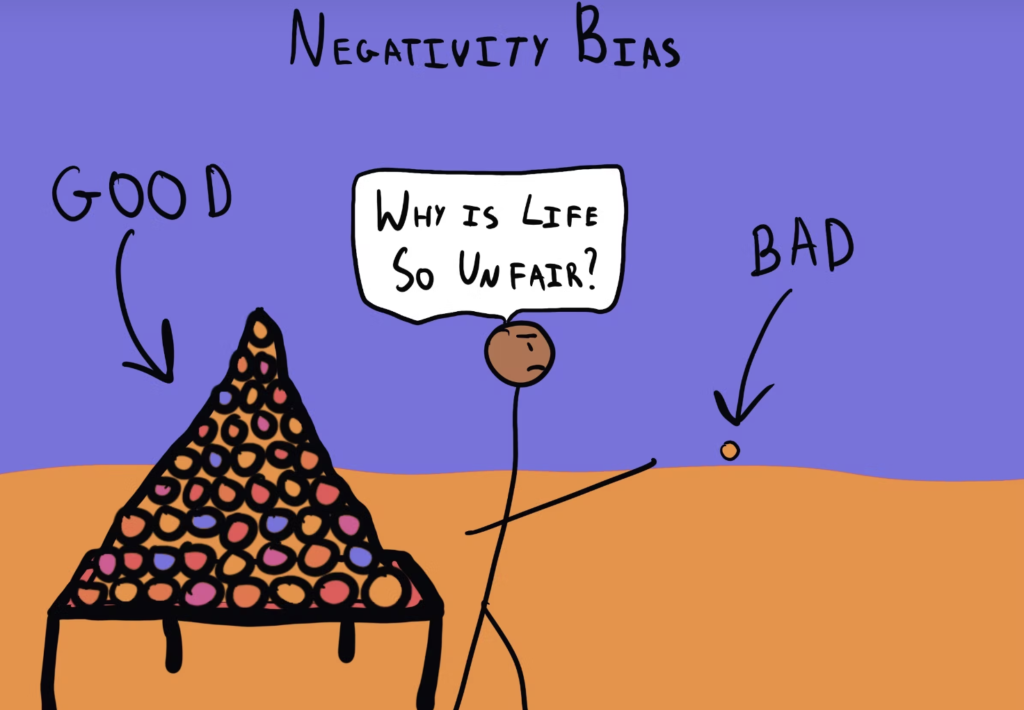How to Deal with Negativity Bias

By: Cameron Fulkerson
On January 9, 2023, the following were the headline stories on CNN.com:
- Kyiv dismisses Russia’s claim that hundreds of Ukrainian soldiers were killed in the Kramatorsk attack.
- The Chinese military stages large-scale military exercises around Taiwan.
- Pakistan to seek $16 billion to rebuild flood-hit country at UN conference.
- Germany detains Iranian nationals suspected of planning a terror attack.
This is a small sample size of the stories featured on the website that day, and there were some positive stories on CNN as well. But the common theme amongst the headlines was a negative slant, an example of how the promotion bad most times outweighs the promotion good. This is in part due to negativity bias.
Negativity Bias is when your brain thinks on the negative side more than what is positive. Let’s say you wreck your car with minimal injury and your insurance return was much more than the car cost. You ultimately came out on the positive end of this situation. But you will still be upset that you wrecked your car, possibly even more so than the joy you experienced from being alive and in a nicer vehicle, because of loss aversion, where the pain is psychology twice as powerful than the good. Paul Rozin, professor of psychology at the University of Pennsylvania, posits that there are four elements of negativity bias:
1. Negative potency: thinking something is equal to the positive
2. Negative gradients: everything goes downhill when it happens
3. Negativity dominance: skewing towards it
4. Negative differentiation: discerning negative emotion
Now how do we prevent it? Obviously, educate yourself. But another way is by evaluating yourself. Ask yourself “what went well?” at the end of each day. This will help your brain better process what has happened and what to do better the next day. You can also do constant reminders for yourself with affirmations, vocalizing positive self-messaging, such as, “I can do this”, “I am strong”, and “I believe in myself.” These tips will help foster more positive thought and are good ways to prevent negativity bias, but the best solution is ultimately, DON’T. If something looks negative, try to distance yourself. Of course you cannot rid yourself of everything negative in life, but you can eliminate a good portion of it by being intentional daily.
Now that you know what is causing your brain to think with a negative slant, try the tactics provided to fight against negativity bias. And tell everyone you know as well! Let’s make negativity bias well known so we can all walk towards a more positive life.


